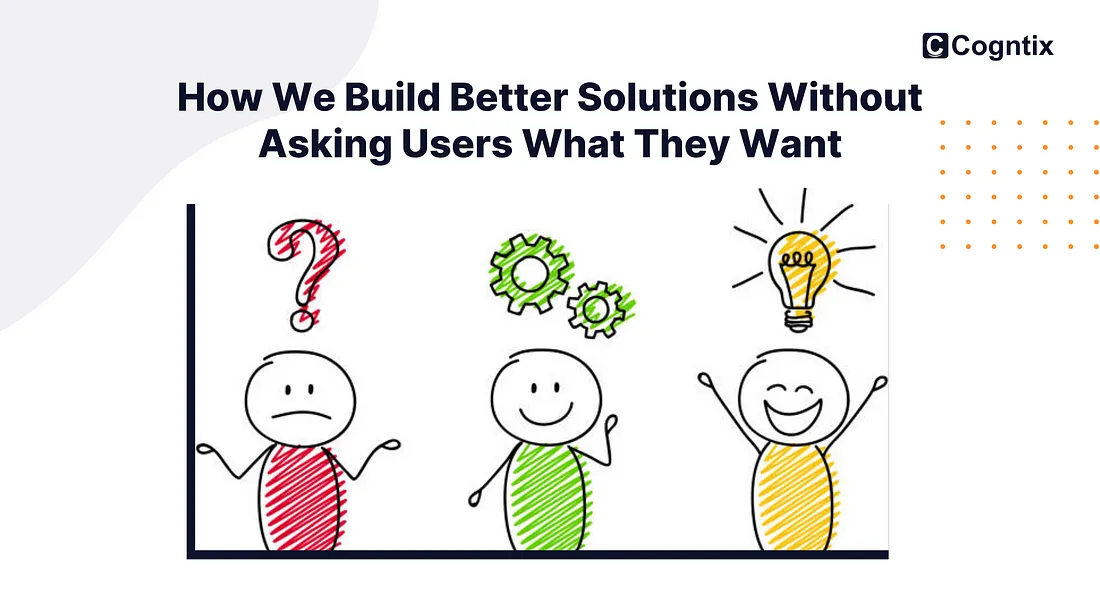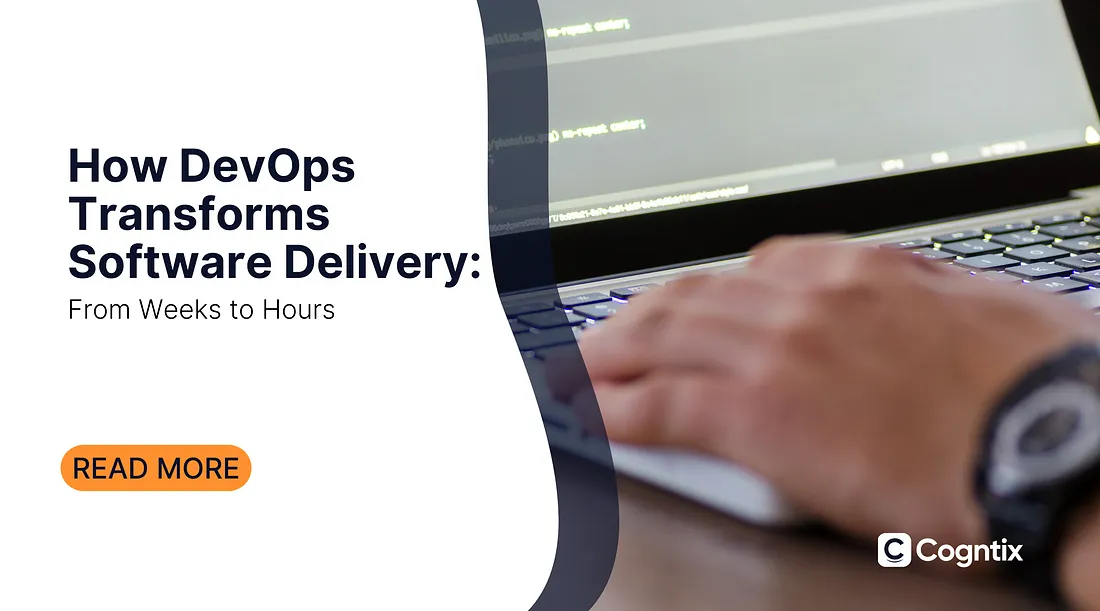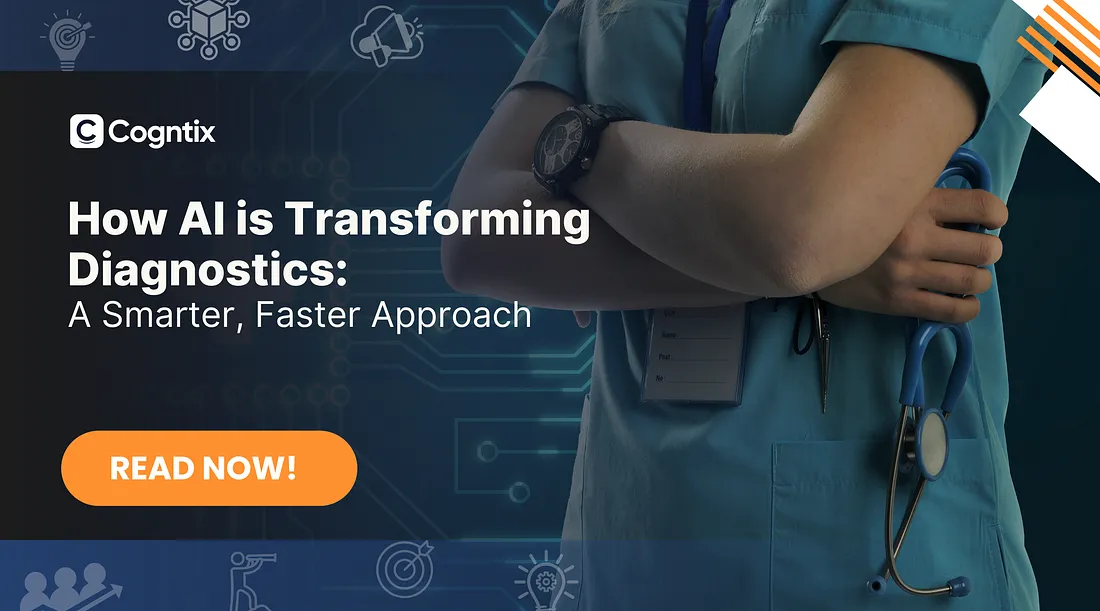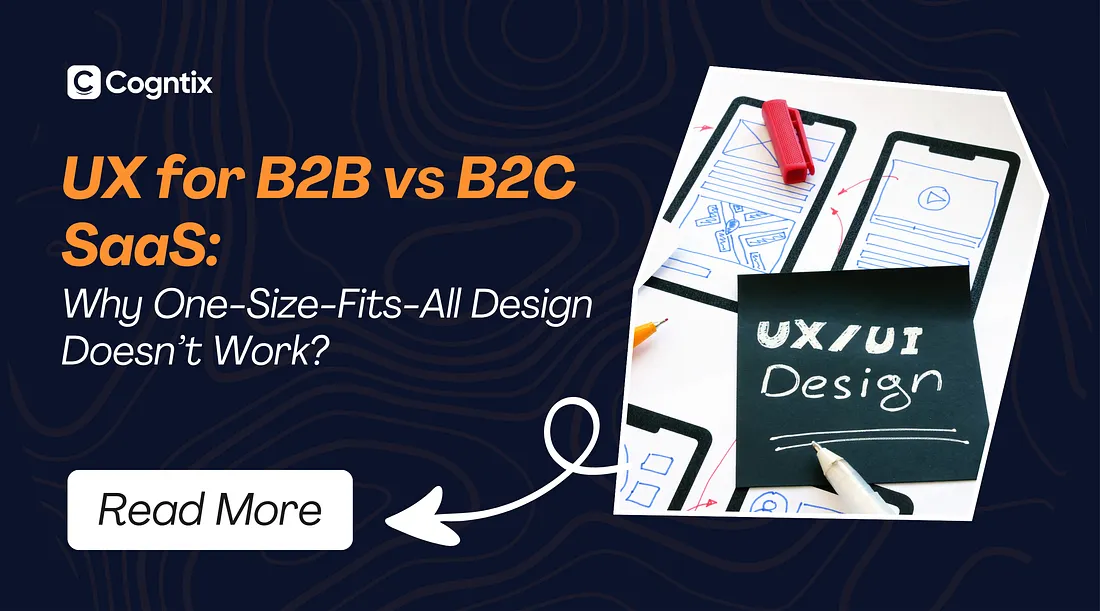“People don’t know what they want until we show it to them.”
— Steve Jobs
At its core, building great software is about understanding customer needs and solving their real problems — not asking them directly what they want.
Too many teams fall into one of two traps:
Building solutions based purely on assumptions.
Asking users what they want, then blindly implementing their requests.
Both approaches fail to deliver value. Users don’t always know what they want or what’s possible. It’s our job to figure that out. Here’s how we do it at Cogntix.
Why Asking Users What They Want Doesn’t Work
Five key reasons make this approach ineffective:
It shows uncertainty: Asking users for direction makes you appear unsure of your vision.
It’s lazy: Figuring out what to build is your job, not theirs.
Users don’t know what they want: They’re often unclear about their own needs.
Limited perspective: Users suggest ideas based only on what they already know.
Unreliable input: People are naturally biased and often unaware of their true motivations.
The Better Approach
Building solutions that users love starts with:
Understanding who your users are.
Identifying their real problems.
Designing solutions that address unmet needs.
Ask yourself:
Who am I building this for, and what problem am I solving for them?
This mindset shifts the focus from features to outcomes.
Three Steps to Build What Customers Actually Need
1. Talk to Users, But Don’t Ask for Features
Regular user conversations are essential, but the goal isn’t to collect feature requests. Instead:
Listen to stories: Ask about the last time they faced a specific problem.
Uncover unmet needs: Dig deeper with follow-up questions For example:
“What solutions have you tried?”
“What would solving this problem enable you to do?”
The focus is on understanding their experiences and frustrations, not their suggestions.
2. Rapidly Test Assumptions
Once you understand the problem, don’t dive straight into building a full solution. Instead:
Create small, testable prototypes.
Validate ideas quickly with real users.
For example:
A rough mockup to test workflows.
A landing page with a call-to-action to gauge interest.
A clickable prototype to gather feedback.
The goal is to learn fast and iterate.
3. Get Feedback and Iterate
User feedback isn’t the gospel, but it’s valuable when paired with data:
Qualitative insights: Conversations and direct engagement.
Quantitative data: Usage metrics, surveys, analytics.
Together, they help refine solutions, ensuring alignment with user needs while avoiding the sunk cost fallacy of clinging to ideas that don’t work.
Why Continuous Discovery Matters
Old-school product development relied on static requirements and lengthy timelines. By the time solutions reached users, assumptions were outdated.
In contrast, continuous discovery focuses on:
Rapid iteration.
Frequent user feedback.
Delivering value incrementally.
This keeps your product relevant and aligned with customer needs.
Final Takeaways
Stop asking users what they want. Instead:
Engage directly with your users.
Uncover their real needs through storytelling.
Work backward from problems, not solutions.
Validate ideas through rapid prototyping.
Iterate based on feedback and data.
By applying these principles consistently, we create software that customers don’t just use — they love, recommend, and pay for.
At Cogntix, we understand that the key to creating software users love isn’t about asking them what they want , it’s about uncovering the real problems they face and solving them effectively. By focusing on understanding, rapid testing, and constant iteration, we build solutions that go beyond features and truly meet user needs.
Want to see how this approach transforms ideas into successful products? Visit Cogntix to learn more and start your journey with us today.




